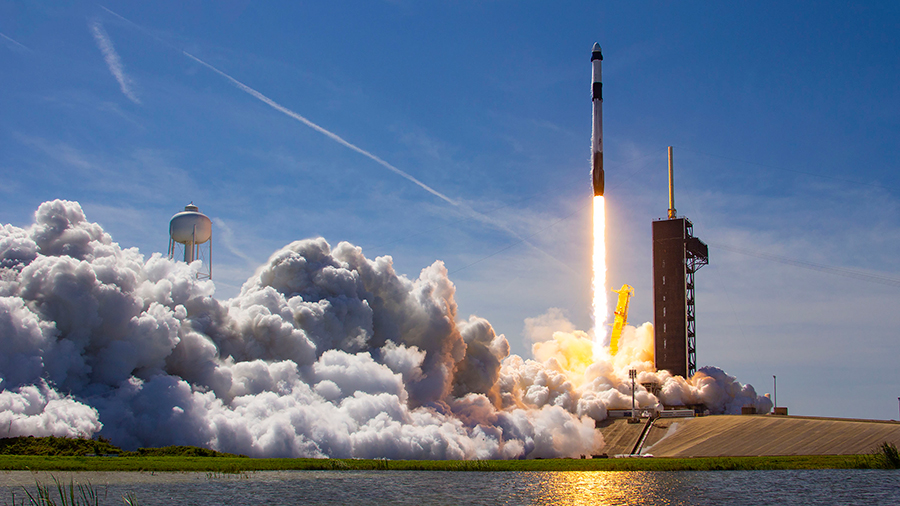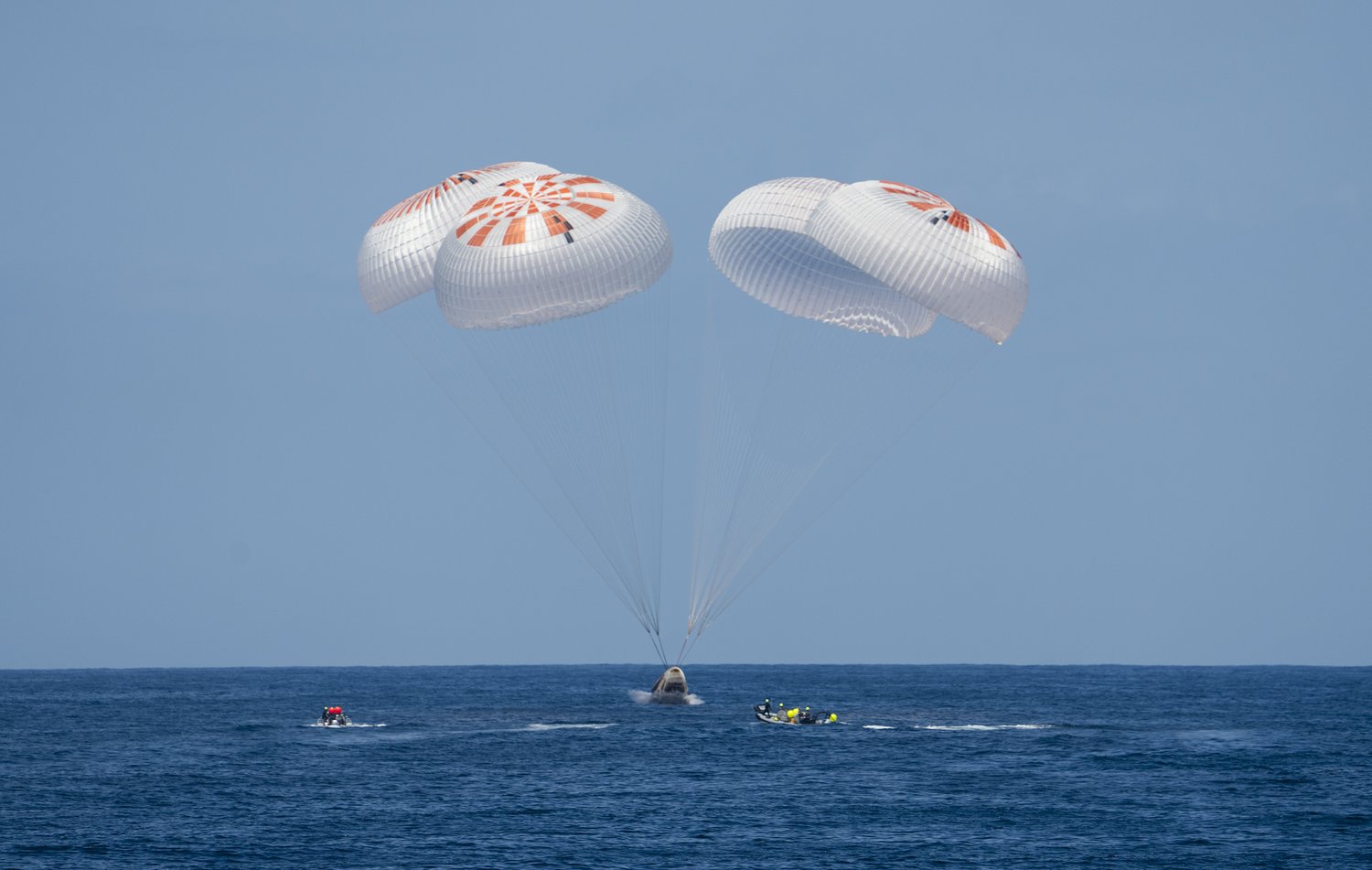
The Ax-1 Crew Has Safely Returned To Earth
The space industry has been going through an immense change for the better in recent years with no plan of slowing down. This not only includes the innovation in different launch vehicles but also our plans for general space access and more. A great example of this was the recent Ax-1 mission that hosted the first private astronauts at the International Space Station.
After spending over a week in space, the Ax-1 crew of 4 are all safe and sound back on Earth. This concludes the first all-private astronaut mission to the International Space Station, successfully demonstrating Axiom Space’s ability to integrate with the ISS and conduct meaningful research. It also marks a milestone in space travel and brightens the future of accessing and living in space.
While this mission was very special, Axiom Space has even more ambitious ideas for the near future. This includes a full commercial space station intended to begin at the ISS and eventually detach and become it’s own once the larger station retires. The Ax-1 mission may not have sent space station segments into low Earth orbit but it did provide a great starting point. Here I will go more in-depth into the recent mission, landing, and what to expect in the near future regarding Axiom Space.
Ax-1 Touchdown

Not long ago we saw the historic Ax-1 launch atop a SpaceX Falcon 9. Now a few weeks later the crew has safely returned to Earth, marking the mission as a complete success. First, the hatch between the SpaceX Dragon Endeavour spacecraft and the International Space Station closed at approximately 7:26 p.m. ET, Sunday, April 24th. This began readying the vehicle for undocking for the Ax-1 crew’s return to Earth. Only a few hours later the SpaceX Dragon spacecraft carrying the Ax-1 crew undocked from the International Space Station at 9:10 p.m. ET Sunday, April 24th, and began heading home to Earth. The vehicle was anticipated to splash down off the coast of Florida on Monday, April 25th. This ended up being the case as the Ax-1 crew and the SpaceX Dragon spacecraft safely splashed down off the coast of Florida at 1:06 p.m. ET, Monday, April 25th. The Ax-1 crew’s arrival back to Earth officially concludes the first all-private astronaut mission to the International Space Station, successfully demonstrating Axiom Space’s ability to integrate with the ISS and conduct meaningful research.
During their 17-day mission, Ax-1 Commander Michael López-Alegría, Pilot Larry Connor, and Mission Specialists Eytan Stibbe and Mark Pathy worked aboard the orbiting laboratory for 15 days. They flew approximately 6.3 million miles, about 240 orbits of Earth. In terms of what was accomplished, Ax-1 supported 26 science payloads and technology demonstrations that had been curated with leading academic and research partners around the globe, including the Mayo Clinic, Montreal Children’s Hospital, Cleveland Clinic, and the Ramon Foundation, as well as research investigations from Axiom’s partners such as studying self-assembling technology for future space habitats, devices to purify air on space stations, and more. The Axiom astronauts served as research subjects to better understand the impacts of microgravity on the human body, as well as methods for maintaining connectedness to loved ones on Earth during space travel. In addition, The Ax-1 crew shared the excitement of expanded access to space with a new generation of space explorers, participating in over 30 STEM engagements. Outreach efforts were conducted in English, Hebrew, Spanish, French, and Arabic.
In keeping with the mission’s emphasis on scientific discovery, within hours of splashdown and recovery, the astronauts took part in post-flight studies such as providing biomedical and physiological data for researchers at the Translational Research Institute for Space Health to gauge the effects of spaceflight on the human body, including changes in vision, balance, and perception. “Axiom Space is incredibly proud of this mission and these astronauts, whose training rigor and commitment to a robust research portfolio set the standard for future private spaceflight,” said Michael Suffredini, President and CEO of Axiom Space. “The Ax-1 mission is a pathfinder, showing the value of this new method of access to orbit and progress toward Axiom Station, a next generation platform in which the benefits and products of life, work and research in space will be available to a greater number of people.” Ax-1 is the first of several planned Axiom missions to the ISS and is an important step for Axiom Station, intended to be the first commercial space station that will serve as a global academic and commercial hub. The success of Ax-1 provides valuable insight as Axiom Space works toward Axiom Mission 2 (Ax-2), the details of which Axiom Space is negotiating with NASA. “The success of this first private astronaut mission to the International Space Station is an important step in opening opportunities for space travelers and achieving NASA’s goal of enabling commercial business off the planet in low-Earth orbit,” said NASA Administrator Bill Nelson. “This progress has been made possible by NASA’s work with private industry – especially the Commercial Crew Program. I’m incredibly proud of the NASA, SpaceX, and Axiom teams for safely completing this landmark mission. Welcome home, Ax-1!”
SpaceX’s Falcon 9 launched Dragon and the Ax-1 crew to the ISS on Friday, April 8th. Seventeen days later, Dragon and the Ax-1 crew undocked from the space station at 9:10 p.m. ET, Sunday April 24th. The Ax-1 mission, the first all-private mission with a commercial spacecraft, highlights the important role of commercial companies to expand access to low-Earth orbit. Ax-1 represents the first of four private human spaceflights that Axiom Space has contracted with SpaceX to transport the crew to and from the orbiting laboratory.
Ax-1 Crew Thoughts

In addition to the large list of accomplishments and important details of the mission, each of the crew members shared their thoughts on what they had accomplished and what it meant for the future. Michael López-Alegría, Ax-1 Commander, vice president of business development at Axiom Space, and former NASA astronaut said, “It’s remarkable to think what was once a dream of visionaries is now a reality as we have officially opened a new era in human-spaceflight with Ax-1. This mission pushed the boundaries further and beyond and opened the door to a future that allows access to Space for a much broader and more international audience”.
Larry Connor, Ax-1 Pilot mentioned, “I feel like our training prepared us for the logistics of space travel and the research for which we were responsible. And I feel like some of my previous endeavors prepared me for some of the unknowns that come with space travel. But I don’t think there’s anything that can truly prepare humans for the sights and feelings that come with circling the globe every 90 minutes. The ISS is a technical marvel. It is complex and busy. The amount of groundbreaking research happening in this flying orbiting laboratory is really breathtaking. And this isn’t just for the United States, this is for all humanity. This was a humbling experience. I hope we’ve played a role – however small – in allowing future generations to have similar experiences”.
You then have Eytan Stibbe, Ax-1 Mission Specialist who pointed out, “I’ve had the honor of being part of Ax-1, the first private crew mission to the International Space Station, and leading the Rakia Mission. The underlying goal of Rakia is to recognize the prospective benefits of space exploration, through it we all aspired to draw on the curiosity associated with human space travel and unleash its creative potential. It aspires to raise awareness of the importance of preserving Earth’s limited resources and fostering commitment to international collaborations and the advancement of space research.”
Finally, Mark Pathy, Ax-1 Mission Specialist mentioned, “Joining the Ax-1 mission to the International Space Station has provided me with a unique platform to contribute to science that aims to tackle important issues affecting life on Earth, as well as contribute to the new era of space exploration we have entered. Under the theme ‘Caring for People and the Planet’, I had the immense honor of collaborating with Canadian institutions and scientists who are paving the way for a better future. This was truly a life-altering experience that delivered well beyond my expectations. I return to Earth a changed person”.
Conclusion
Each day the space industry continues to grow and innovate in unique and ambitious ways. This helps change how we access space among other things for the better. Axiom is a great example with the goal of creating the first commercial space station. Only a few days ago the crew safely returned to Earth completing the Ax-1 mission. While it did not send any space station segments into low Earth orbit, it did provide a great start and example of what’s possible. We will have to wait and see how it progresses and the impact it has on the space industry.
